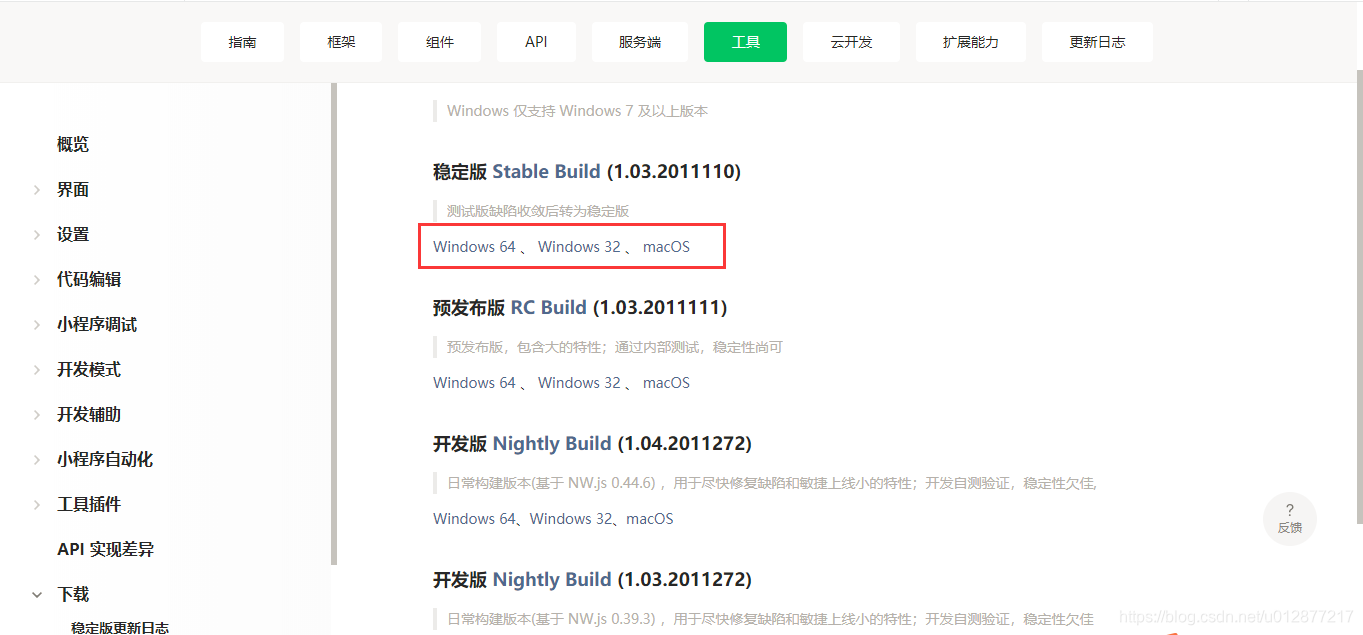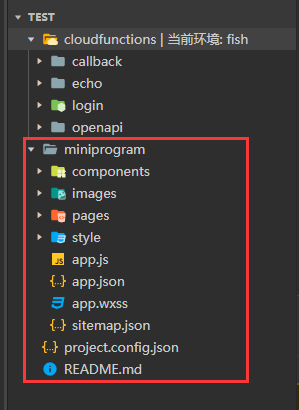0基础学微信小程序开发(一)基本介绍
本文共 679 字,大约阅读时间需要 2 分钟。
目录
小程序介绍
小程序开发作为腾讯17年推出的一块开发工具,目前已经培养了大量的开发人员,今年的峰会上已经有超过100万开发者选择了小程序,尤其是初创团队特别适合。作为微信推出的工具,感觉有几个特点,一是技术体系完善,二是社区丰富,三是文档友好。新手其实也是蛮适合入手的,现在是移动互联网的时代,能快速的掌握移动端开发的技能也是蛮好的。
账号注册
注册了账号之后,先需要下载开发工具 根据需要选择版本下载安装 工具启动后,新建项目
根据需要选择版本下载安装 工具启动后,新建项目  目录需要新建一个空目录,项目名称可以自己定义,APPID是自己申请账号时就已经确定了
目录需要新建一个空目录,项目名称可以自己定义,APPID是自己申请账号时就已经确定了  后端开发我们选择小程序-云开发,云环境为我们提供了数据库,后台服务,调用也比较方便
后端开发我们选择小程序-云开发,云环境为我们提供了数据库,后台服务,调用也比较方便  功能介绍,左边是程序的预览区,可以直观看到你写的代码的表现形式;中间一栏是代码的结构,右边是代码的编辑区域
功能介绍,左边是程序的预览区,可以直观看到你写的代码的表现形式;中间一栏是代码的结构,右边是代码的编辑区域  cloudfunctions是云函数的区域,基本上我们一个后台方法就需要一个云函数支持
cloudfunctions是云函数的区域,基本上我们一个后台方法就需要一个云函数支持  miniprogram相当于前端的区域,页面的样式、组件、交互逻辑都需要在这里写
miniprogram相当于前端的区域,页面的样式、组件、交互逻辑都需要在这里写 官方文档
 指南是对总体功能的一个介绍,包括开发流程的 框架,需要搞明白小程序是怎么交互的,比如wxss是写样式的,wxml是组件的编写地方,js是定义逻辑的地方 组件,可以调用的各类组件,比如容器组件view,文本组件text API,微信开发的各类工具类 服务端,这个就是更高级一点的功能,用到的时候查看一下 云开发,这个是讲述后台的各类操作,比如访问数据库,访问存储
指南是对总体功能的一个介绍,包括开发流程的 框架,需要搞明白小程序是怎么交互的,比如wxss是写样式的,wxml是组件的编写地方,js是定义逻辑的地方 组件,可以调用的各类组件,比如容器组件view,文本组件text API,微信开发的各类工具类 服务端,这个就是更高级一点的功能,用到的时候查看一下 云开发,这个是讲述后台的各类操作,比如访问数据库,访问存储 总结
这一篇我们分析了小程序的基本功能,和官方文档的大致介绍,下一篇我们开始一点点的学习小程序的具体使用
转载地址:http://djbzz.baihongyu.com/
你可能感兴趣的文章
Netpas:不一样的SD-WAN+ 保障网络通讯品质
查看>>
NetScaler的常用配置
查看>>
netsh advfirewall
查看>>
NETSH WINSOCK RESET这条命令的含义和作用?
查看>>
Netty WebSocket客户端
查看>>
netty 主要组件+黏包半包+rpc框架+源码透析
查看>>
Netty 异步任务调度与异步线程池
查看>>
Netty中集成Protobuf实现Java对象数据传递
查看>>
Netty事件注册机制深入解析
查看>>
Netty原理分析及实战(四)-客户端与服务端双向通信
查看>>
Netty客户端断线重连实现及问题思考
查看>>
Netty工作笔记0006---NIO的Buffer说明
查看>>
Netty工作笔记0007---NIO的三大核心组件关系
查看>>
Netty工作笔记0011---Channel应用案例2
查看>>
Netty工作笔记0013---Channel应用案例4Copy图片
查看>>
Netty工作笔记0014---Buffer类型化和只读
查看>>
Netty工作笔记0020---Selectionkey在NIO体系
查看>>
Vue踩坑笔记 - 关于vue静态资源引入的问题
查看>>
Netty工作笔记0024---SelectionKey API
查看>>
Netty工作笔记0025---SocketChannel API
查看>>